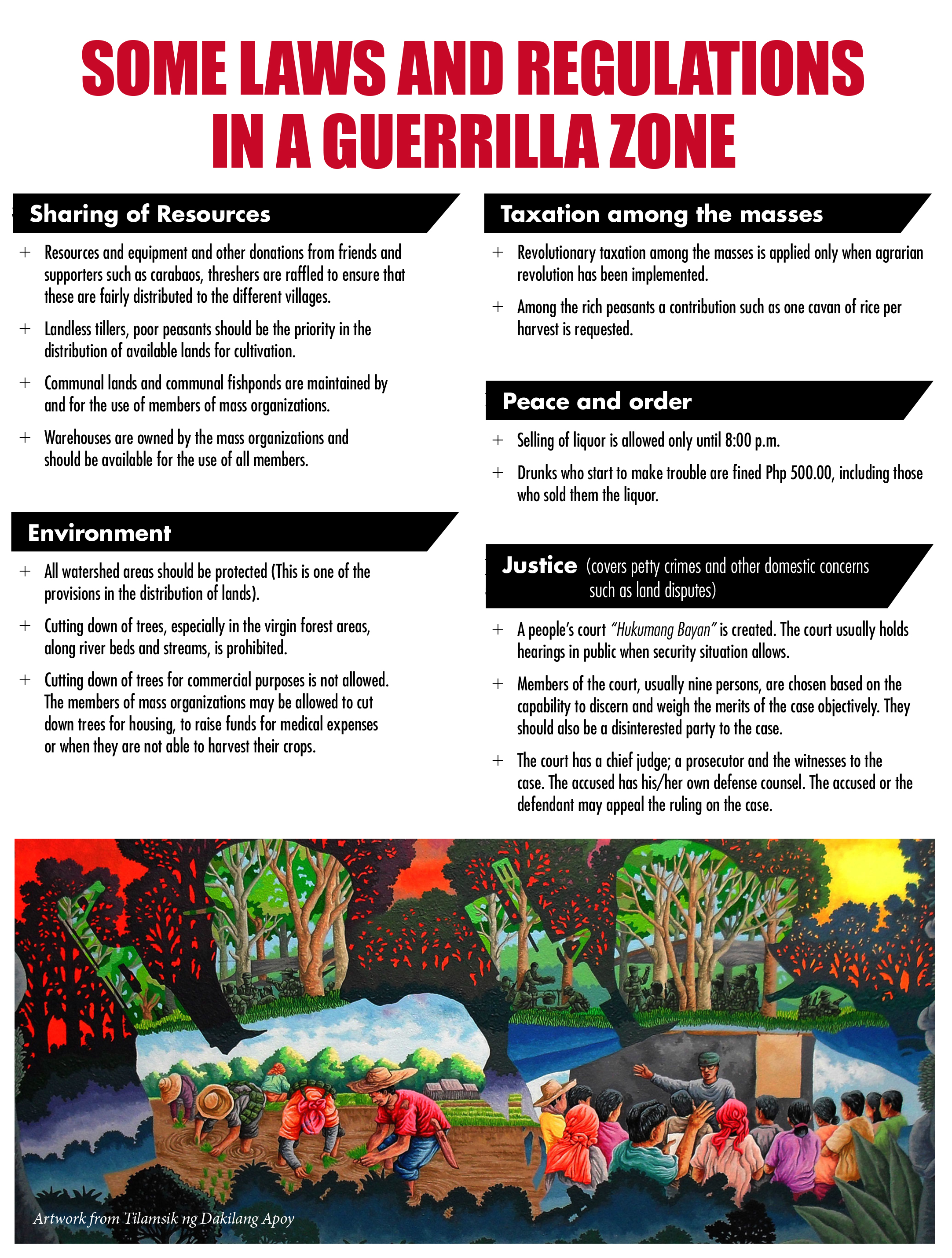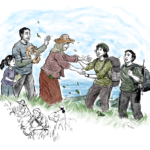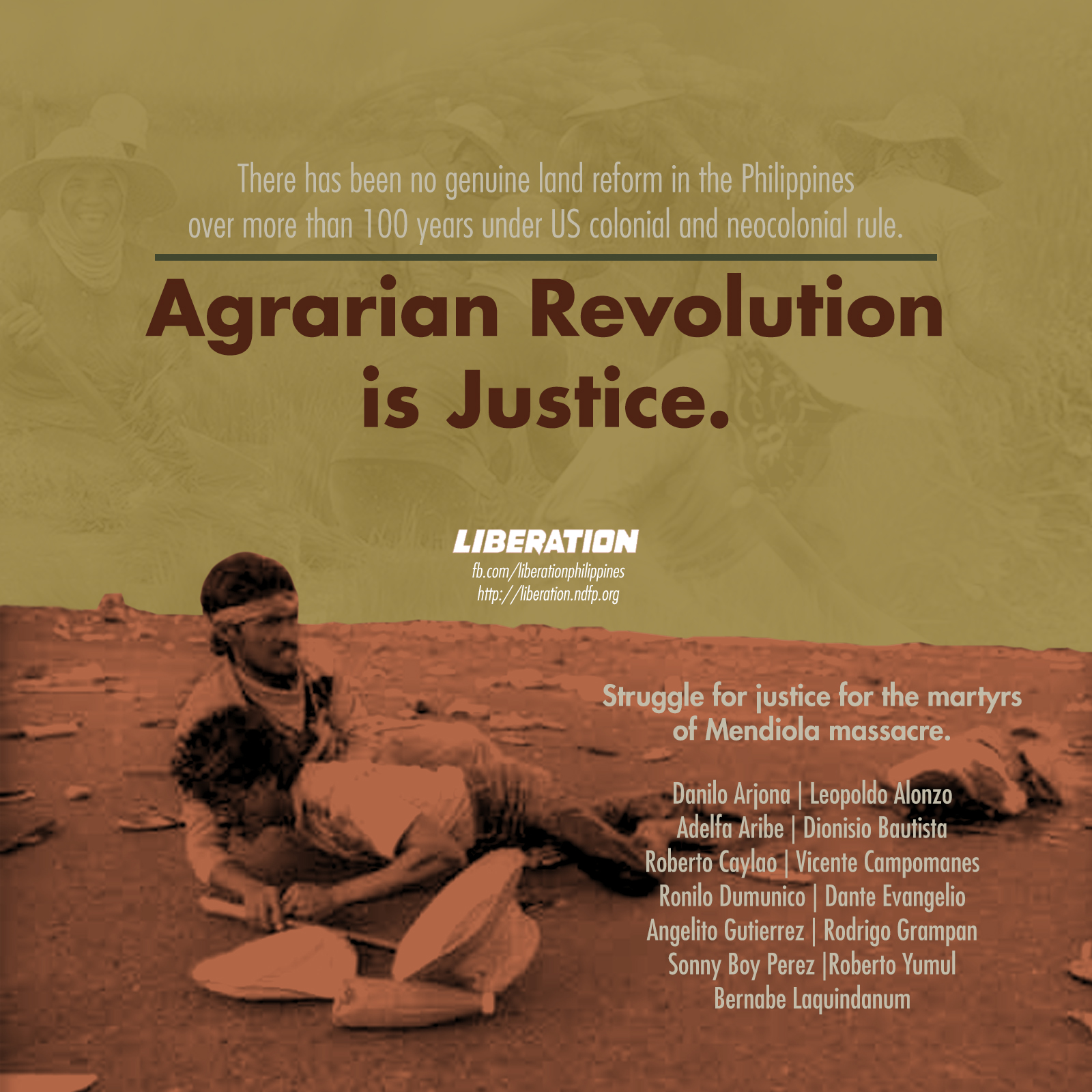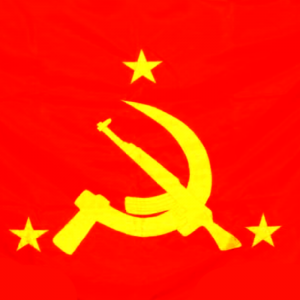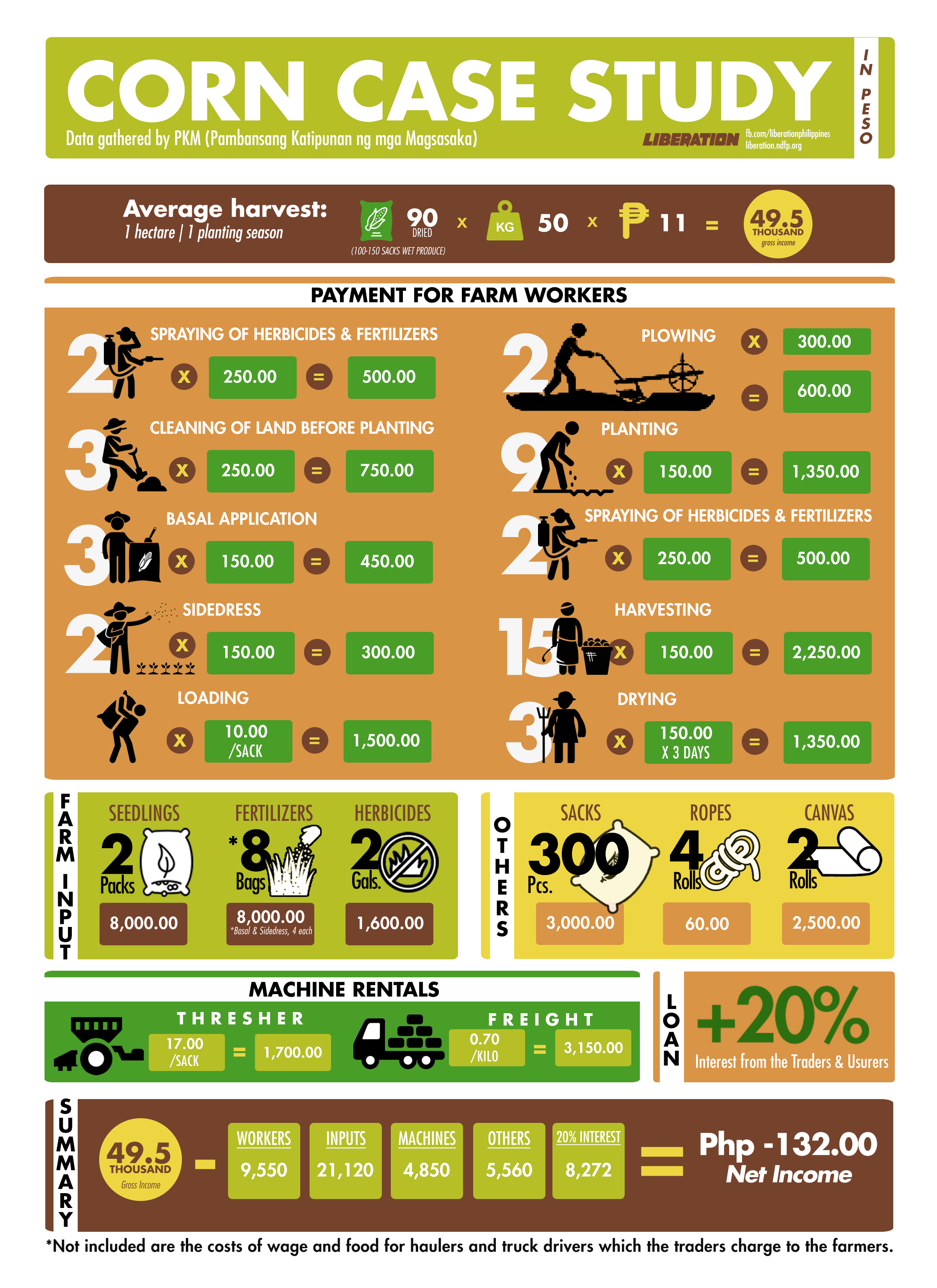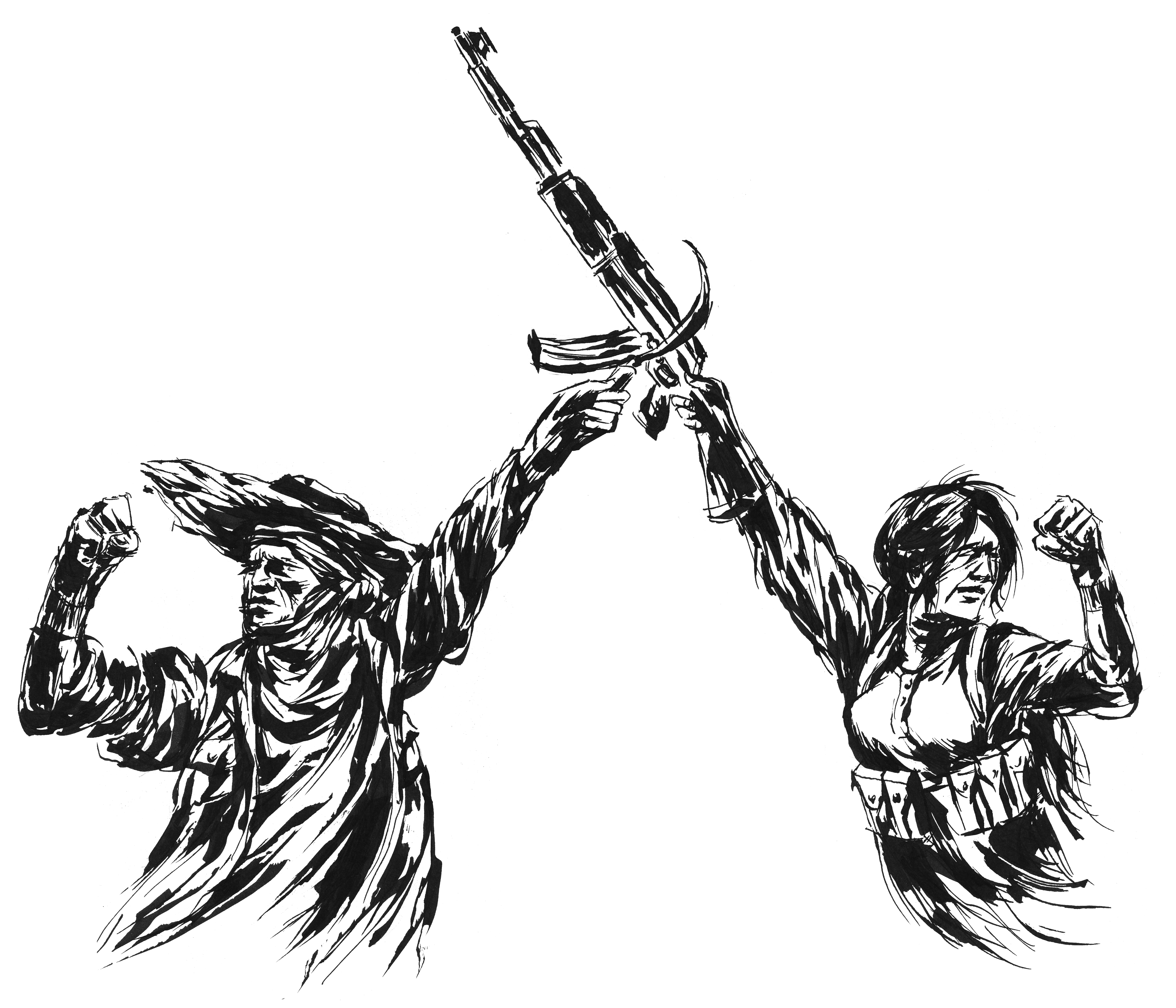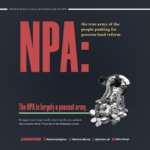REJOINDER TO MALACAÑANG’S OUTRIGHT LIES REGARDING SAGAY MASSACRE
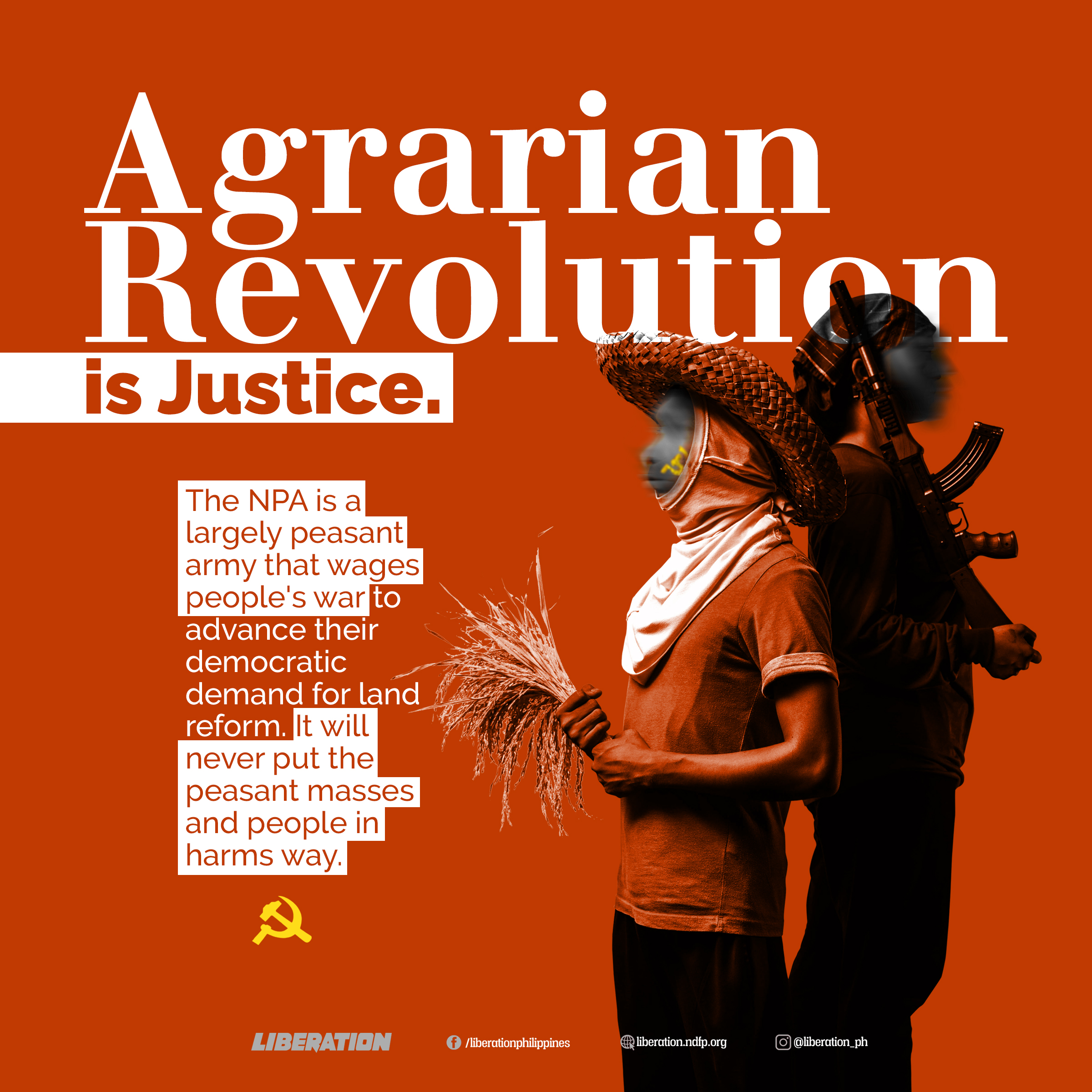
Communist Party of the Philippines 23 October 2018
The Communist Party of the Philippines (CPP) dismisses as outright lies the statements of Malacañang claiming that the NPA is behind the massacre of nine farm workers last Saturday in Hacienda Nene, in Sagay City, Negros Occidental.
The CPP denounces Duterte and his officials for twisting facts and sowing disinformation to confuse the public and conceal the responsibility of the military- and police-backed private armies and paramilitary groups behind the Sagay massacre and the spate of killings against peasant leaders in Negros island.
Ultimately, it is Duterte himself who is culpable for having spread contempt for human rights and incited the AFP and PNP to commit widespread violence and mount attacks against the people under his Oplan Kapayapaan war of suppression.
The conjecture by police officials that the NPA committed the massacre to stir up the masses is garbage. Everyday, the peasant masses, especially in Negros, are roused to revolt by the the big landlords and the fascist regime who subject them to all forms of exploitation, oppression and armed violence.
The NPA is a largely peasant army that wages people’s war to advance their democratic demand for land reform. It will never put the peasant masses and people in harms way.
It exerts all effort to defend the lives of the peasants against the violent attacks of the rural despots and their armed goons.
It is the landlords of Negros and all over the country who zealously oppose land reform. They do not want to accede even a square inch of land to the peasants who are merely demanding the right to plant food crops in the small patches of land between or around the vast sugarcane haciendas.
The revolutionary authorities in Negros are now conducting its investigation into the Sagay massacre. A special people’s court can be convened soonest in order to try the criminals behind the massacre and heed the cry for justice of the peasants and farm workers.
#AgrarianRevolution
#JusticeForSagay9



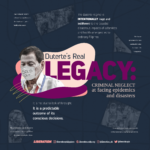
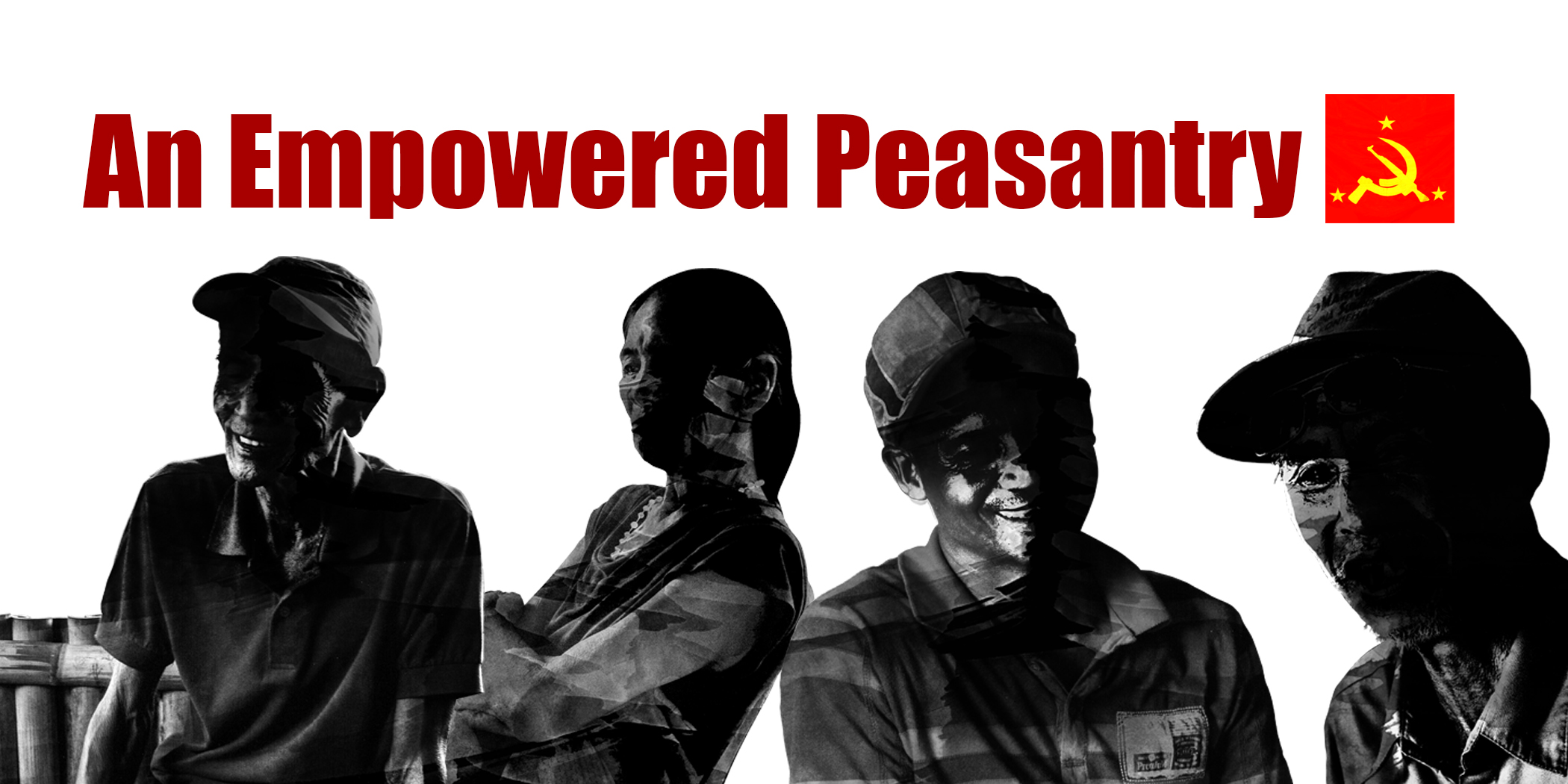
 “Kung malayo pa ang pupuntahan natin, mas malayo na rin naman ang pinanggalingan. Ituloy-tuloy na natin.”
“Kung malayo pa ang pupuntahan natin, mas malayo na rin naman ang pinanggalingan. Ituloy-tuloy na natin.” “There’s joy in our hearts because we are able to contribute to the resolution of the problems of the majority of the poor in our country.”
“There’s joy in our hearts because we are able to contribute to the resolution of the problems of the majority of the poor in our country.” “There was fear but we were not intimidated.”
“There was fear but we were not intimidated.” “What is important is we have rectified the errors and we have now grown stronger.”
“What is important is we have rectified the errors and we have now grown stronger.”